Term 2 Chapter 2 | 5th Social Science - Hydrosphere | 5th Social Science : Term 2 Unit 2 : Hydrosphere
Chapter: 5th Social Science : Term 2 Unit 2 : Hydrosphere
Hydrosphere
UNIT 2
Hydrosphere

Learning
Objectives
Students
will be able to:
*
describe the features of Hydrosphere.
*
define each type of water body.
*
list the steps to be taken to conserve water.
*
explain the steps involved in the water cycle.
 Rani:
Sundar! Our earth is huge, isn’t it?
Rani:
Sundar! Our earth is huge, isn’t it?
 Sundar:
Yes Rani. It is huge. Do you know what does it consist of?
Sundar:
Yes Rani. It is huge. Do you know what does it consist of?
 Rani:
No, can you tell me?
Rani:
No, can you tell me?
 Sundar:
Sure! The earth consists of Lithosphere,
Hydrosphere and Atmosphere.
Sundar:
Sure! The earth consists of Lithosphere,
Hydrosphere and Atmosphere.
 Rani: Oh! Such big words! What does this mean?
Rani: Oh! Such big words! What does this mean?
 Sundar: This means that the earth consists of land, water bodies and air.
Sundar: This means that the earth consists of land, water bodies and air.
 Rani: Yes! That’s true.
Rani: Yes! That’s true.
 Sundar: When we went to the Marina Beach, have
you noticed how much water in the sea! The water from oceans, seas and so on
become a part of the hydrosphere.
Sundar: When we went to the Marina Beach, have
you noticed how much water in the sea! The water from oceans, seas and so on
become a part of the hydrosphere.
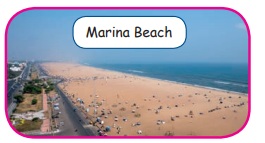
 Rani: Wow! Can you tell me more about
hydrosphere, Sundar?
Rani: Wow! Can you tell me more about
hydrosphere, Sundar?
 Sundar: Sure
Sundar: Sure
Hydrosphere is the total amount of water present on a planet.
The hydrosphere includes water that is present on the surface of the planet,
underground, and in the air. Therefore, a planet’s hydrosphere can be in the
form of liquid, vapour, or solid in the form of ice.
Hydrosphere covers about 71% of the planet Earth.
This includes water in liquid and frozen forms. 97% is salt water and rest
of the 3% water is found in ground, lakes, rivers and
also frozen as ice in the form of glaciers and icebergs.
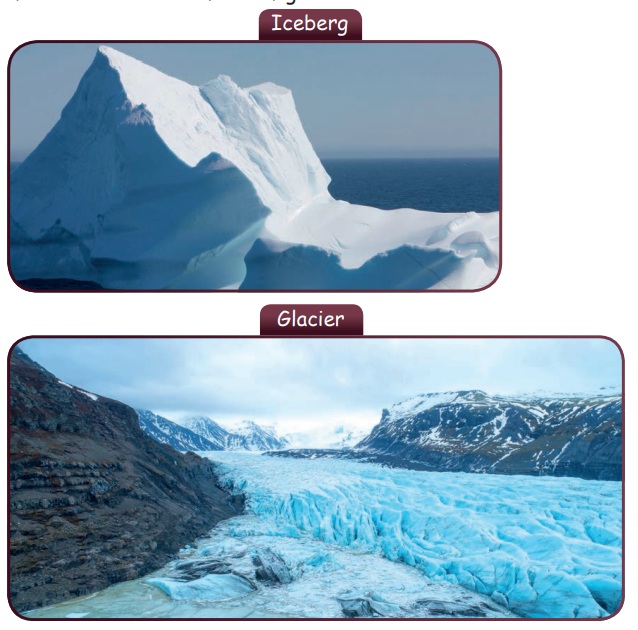
LET US KNOW
There is no aquatic life in Dead Sea because it is too salty.
Think
What other water
sources can be a part of the Hydrosphere?
ACTIVITY
Let us write
Construct Rain Water Harvest system at your school with the help
of your teachers.
Importance of
Hydrosphere
We need water to carry out many activities in our daily lives. We
need water to drink, take bath, cook food etc. Animals and plants also need water for
their survival. If there is no water, it cannot evaporate and form clouds. So
there will not be any rain.
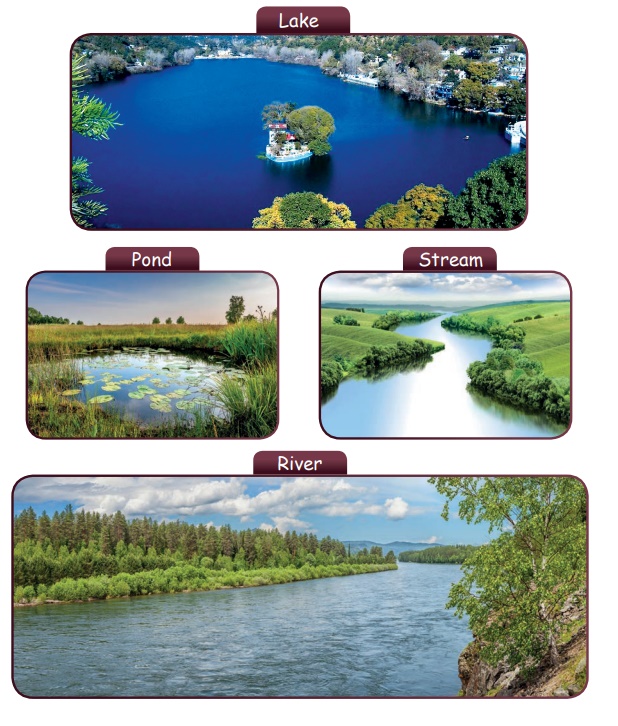
Types of water bodies
Oceans:
Oceans are vast water bodies that usually separate continents from
one another. The water is salty in nature. There are five oceans on earth. They
are: the Pacific Ocean, Atlantic Ocean, Indian
Ocean, Southern Ocean, and Arctic Ocean.

Sea:
Seas are also vast water bodies but smaller than oceans in size.
They are partly closed by land and opens up to the ocean. Sea water is salty in nature.
Example: Arabian Sea
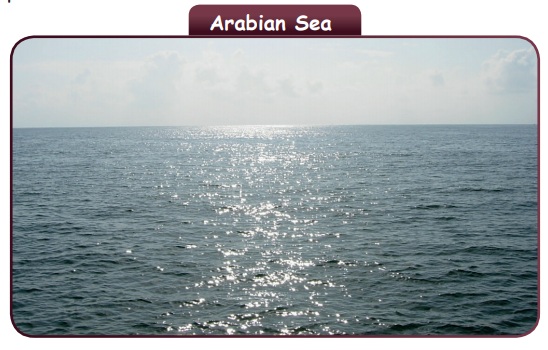
LET US KNOW
It is incredible that
a wide variety of earth’s living organisms exist within the oceans.
Some of the longest
flowing rivers in India are the Ganges, Yamuna, Godavari, Krishna and Cauvery.
ACTIVITY
Let us write
Describe a water body that you have visited. River/ lake/ waterfall/ sea etc.
Rivers:
Rivers are large streams that
flow over the land. Rivers are fresh water bodies which generally begin at mountainous areas.
They usually drain in oceans or seas.
Example: Ganga and cauvery.
Lakes:
A lake is a water body
surrounded by land on all sides. Lakes
can have salt or fresh water.
Example: Dal Lake.
Gulf:
A gulf is a large area of an ocean or a sea that is
surrounded by land.
Example: Gulf of kuchch.
Bay:
A bay is a body of water,
which is partially enclosed by land. It
has a wide mouthed opening of land, and is joined to the sea or other large
water bodies.
Example: Bay of Bengal.
LET US KNOW
Sambhar Salt Lake in Rajasthan is one of
the important inland salt water lake in India
Name some water bodies in your locality?
Lagoon:
A stretch of salt water separated from the sea by a low sand
bank.
Example: Lake Chilika in Odisha.
Strait:
A strait is a narrow stretch of
water which joins two larger water bodies.
Example: Palk Strait joining the Bay of Bengal and the Indian
Ocean.
Waterfall:
Water fall forms when a river flows from a great height. Example: Courtallam
Waterfall
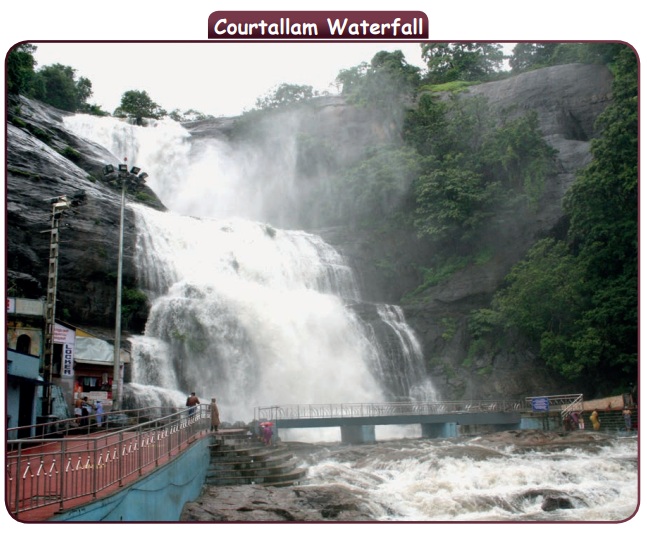
We should be very careful about how we use the water. We have
the choice to conserve water resources or pollute them further. Water pollution is a common phenomenon around us. We throw
garbage, join sewage to rivers and so on, making river water contaminated and
not fit for use. This, increases the scarcity of water for household use.
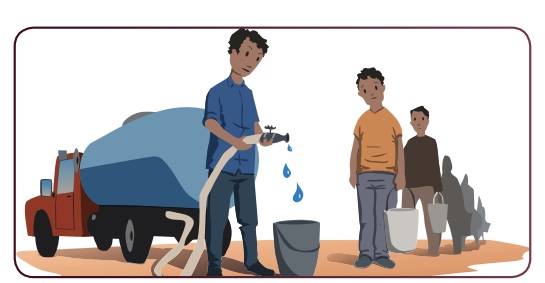
Rani: Oh! water scarcity!
Sundar: Yes, We faced it too
Rani. The whole of Tamil Nadu faced a huge water crisis.
Rani: You are right. I think
we should come up with step to use water thoughtfully.

Children you can
easily do these.
* Take water in a bucket for bathing instead of using shower.
* After washing vessels check if the taps are closed.
Can you help Rani to come up with more steps?
Think
How can we save water?
Do not put plastic garbage when you go near beaches. It is very
dangerous for the aquatic life.
 Sundar: Rani, Do you know that water continuously moves on, below and
above the surface of the earth?
Sundar: Rani, Do you know that water continuously moves on, below and
above the surface of the earth?
 Rani: Really! How?
Rani: Really! How?
 Sundar: There is a water cycle that occurs continuously. Water changes
its state from solid, liquid, gas in this cycle.
Sundar: There is a water cycle that occurs continuously. Water changes
its state from solid, liquid, gas in this cycle.
The stages involved in
a complete water cycle are:
Stage I: Evaporation - The heat of the sun
falls on the water bodies like oceans, seas, lakes, rivers etc. The water
slowly evaporates as vapours into the air.
Stage II: Condensation
- As the vapours rise
high, the cooler temperatures make them cool down and turn back into liquid.
This is called condensation. Wind moves the liquid around, leading to the
formation of clouds.
Stage III:
Precipitation - Wind movements cause the clouds particles to collide. They
become rain bearing clouds and fall back onto the earth’s surface by the
process known as precipitation. This may occur in the form of rain, hail, snow
or dew depending upon the temperature conditions.
Stage IV: Runoff and Infiltration - The water either runs
off into oceans, rivers and ground surface or is absorbed into the soil
(infiltration). This cycle continues.
Glossary
Continent: Main stretches of land
found on earth.
Evaporate: The process by which
liquid becomes gas.
Precipitation: Rainfall.
Recap
* Earth is made up of land, water and air.
* Water is necessary for all life forms.
* 3% of water is found in ground, lakes, ponds, streams and rivers
.
* There are five major oceans in the world: The Pacific, Atlantic,
Indian, Southern and Artic ocean.
* Waterfall forms when river falls from great height.
* We should use water carefully.
Related Topics